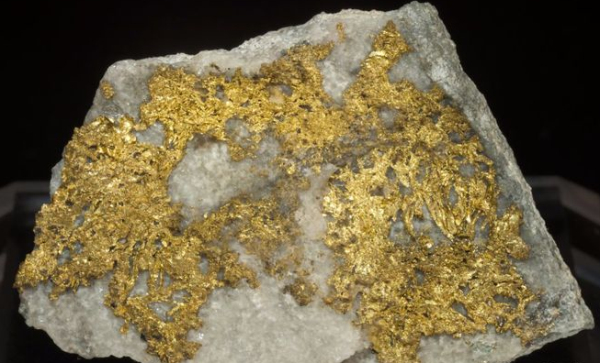Gold is a kind of floatable mineral. In primary gold deposits, natural gold often coexists with pyrite, chalcopyrite, galena, sphalerite, arsenopyrite and other sulfide minerals. These minerals are both buoyant minerals and can form stable mineralized foam. They are the most ideal carrier minerals for gold ore. Through flotation, gold can be enriched into sulfide concentrate to the greatest extent. The surface of natural gold has good hydrophobicity. It can be floatated with pyrite collectors such as xanthate, and fine-grained natural gold can be recovered by carrier flotation, ion flotation and other fine-grained flotation methods.

1. The natural gold in most ores exists in the form of fine-grained disseminated, so it must be finely ground to make the gold particles reach monomer dissociation;
2.Gold often coexists closely with sulfide minerals, especially pyrite, so it is necessary to recover pyrite at the same time when recovering gold;
3.The relative density of gold is very high. In the process of flotation, gold particles are easy to fall off from the surface of bubbles after contacting with bubbles;
4. In oxidized ores, the surface of gold particles is often polluted or covered by iron oxides;
5.Gold is flexible and ductile. It is often flaky in grinding, and the surface is often embedded with a layer of ore particles, making the surface of gold particles rough. In addition, when the steel ball grinds the gold particles, the surface of the gold particles will also be coated with metal iron particles. For example, use electromagnets to suck metal iron particles (the product of steel ball grinding) from the ground gold bearing ore to prove that it contains gold.

The particle size of gold directly affects its floatability. According to the particle size, it can be divided into four categories: +0.8mm gold particles, which are not floatable;Gold particles of 0.8mm+0.4mm are difficult to float (only 5% - 6% can float);Gold particles of 0.4mm+0.25mm can float (floating amount is about 25%)- 0.25mm gold particles are easy to float (recovery rate can reach 96%). It can be seen that the gold particles in flotation should not be greater than 0.4mm, so it is necessary to pre select coarse gold by gravity separation, mercury mixing or other methods before flotation.
Generally speaking, gold bearing quartz vein ores with fine gold particles and good floatability, gold bearing sulfide ores and graphite ores containing a variety of valuable metals (copper, lead and zinc) are suitable for recovery by flotation. Flotation method can enrich gold and other metal sulfides into concentrate and get waste tailings.
Due to the high density of gold, although it has good floatability, it cannot form a stable mineralized foam due to its small quantity, and it still cannot float well. It is difficult to recover gold bearing quartzite with gold particles larger than 0.25mm and without metal sulfide by flotation. At this time, other methods can be used for recycling.